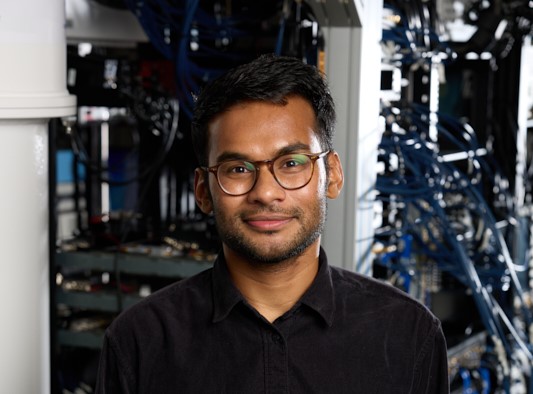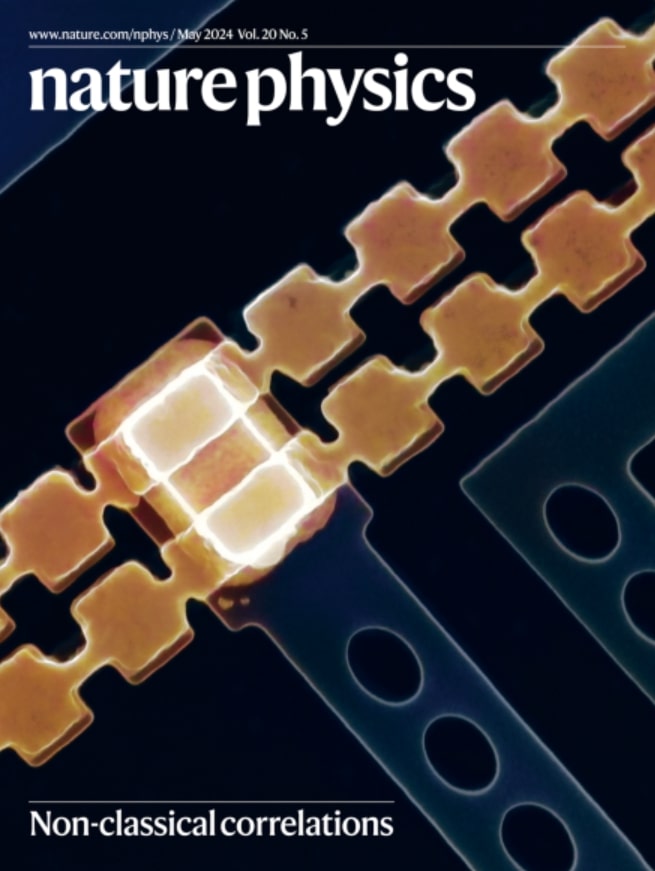
I am an experimental quantum physicist/engineer, currently a Research Scientist at the AWS Center for Quantum Computing, where I investigate quantum hardware based on superconducting circuits.
Prior to joining AWS, I was an Assistant Professor of Electrical and Computer Engineering at Rice University. Before that, I was an Institute for Quantum Information and Matter (IQIM) postdoctoral scholar at Caltech, and received my PhD from Harvard.
You can reach me by email at srujm333[at]gmail[dot]com.
Research highlights
My research so far has focused on hybrid quantum systems that link physically different qubits, with the goal of developing new hardware elements for quantum computers and networks. This includes the theory and design of novel devices to engineer such interactions, development of new nanofabrication techniques, and low-temperature quantum microwave and optical studies. My experimental toolkit includes superconducting quantum circuits, color-center or defect qubits, and quantum photonic and acoustic devices.
I have made focused contributions on three specific topics:
- Microwave-optical quantum transduction, believed to be essential for networking superconducting quantum processors into large-scale quantum computers,
- The silicon-vacancy color-center qubit in diamond, a leading technology for quantum repeaters,
- Quantum acoustics, a new frontier investigating phonons in hybrid quantum systems.

Microwave-optical quantum transduction
- Non-classical microwave-optical photon pair generation with a chip-scale transducer in Nature Physics; first demonstration of quantum correlations between single optical and microwave photons
- Entangling time-bin photonic qubits at optical and microwave frequencies in Phys Rev X
Silicon-vacancy color-center qubit and quantum photonics in diamond
- Strain engineering of the SiV in diamond in Phys Rev B; a detailed resource on the electronic structure of the SiV, also relevant to other group-IV vacancy centers in diamond
- Controlling spin coherence with a MEMS device in Nature Communications; work on tailoring interactions between a single defect qubit and its phonon environment; popular coverage: Straining a diamond in Ars Technica
- Quantum interference of electromechanically stabilized emitters in nanophotonic devices in Phys Rev X; popular coverage: Entangling photon sources on a tiny bridge in Physics
- Fiber-coupled diamond quantum nanophotonic interface in Phys Rev Applied
- High quality-factor optical nanocavities in diamond in Nature Communications
Quantum acoustics
- Observation of the acoustic Purcell effect with a color-center and a nanomechanical resonator; a recent arXiV preprint which is the culmination of experiments initiated by our 2018 PRB on the SiV center
- High efficiency low noise photon-phonon transducers with optomechanical crystals in Optica
- In-situ tuning of optomechanical crystals with AFM nano-oxidation in Optica
- Coherent acoustic control of a single SiV spin in diamond in Nature Communications
- Phonon networks with SiV centers in diamond waveguides in Phys Rev Lett; proposal for high-fidelity spin-spin interactions mediated by phonons
- Diamond optomechanical crystals in Optica